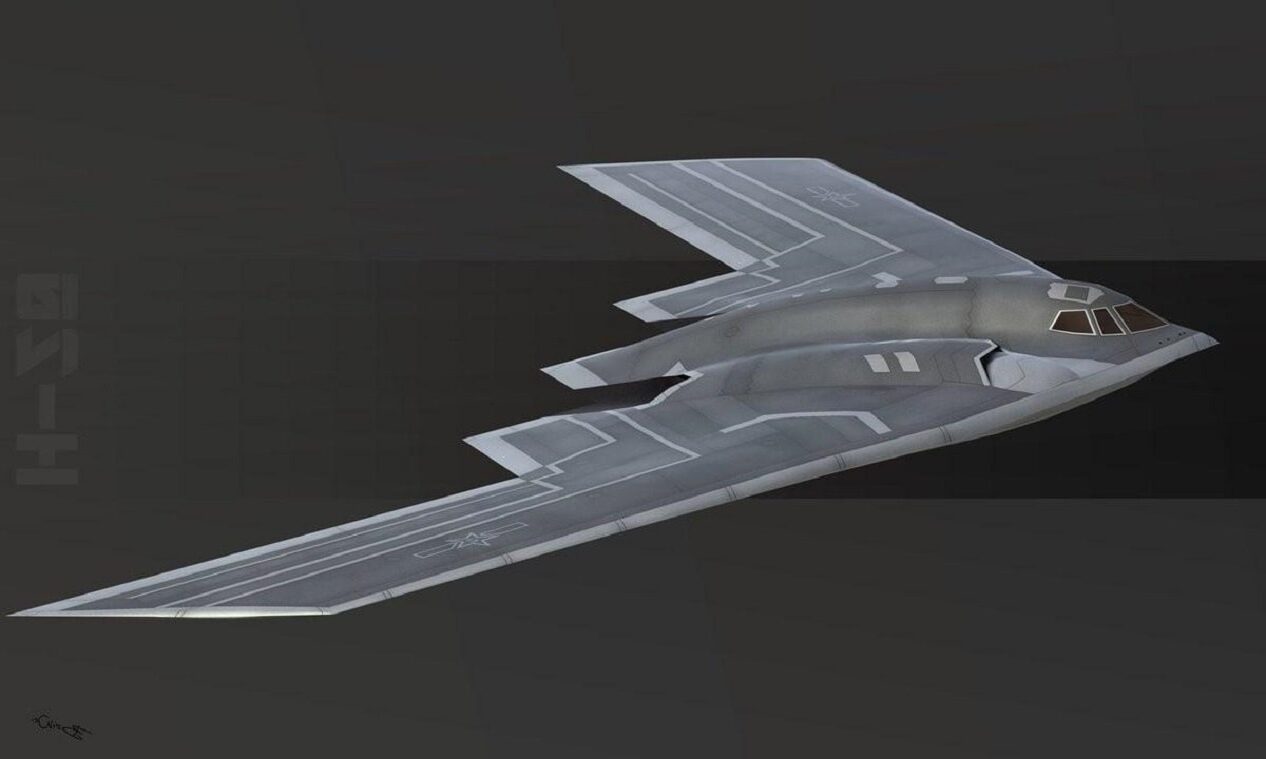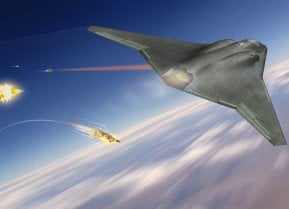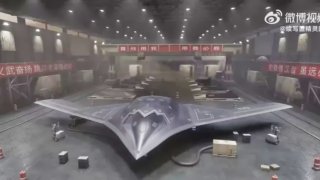Could China's H-20 Bomber Nuke America Undetected?
China's developing H-20 stealth bomber could soon reshape global nuclear deterrence. With a design inspired by the U.S. B-2 Spirit, the H-20 marks a major leap toward completing China’s nuclear triad, adding an air-delivered component to its nuclear capabilities.
What You Need to Know: China's developing H-20 stealth bomber could soon reshape global nuclear deterrence. With a design inspired by the U.S. B-2 Spirit, the H-20 marks a major leap toward completing China’s nuclear triad, adding an air-delivered component to its nuclear capabilities.

-Featuring a flying wing design and potentially adjustable twin-tail surfaces, the H-20 could penetrate deep into enemy territory undetected, potentially reaching as far as Guam.
-If successful, this stealth bomber would extend China's reach and significantly enhance its deterrent capabilities, raising new strategic concerns for the U.S. and its allies in the Pacific.
China’s H-20 Stealth Bomber: A New Era in Nuclear Deterrence?
America has been closely watching China’s expanding military capabilities with growing concern. And rightly so. China’s latent economic and military power is immense, while its actual power is steadily inching closer to peer status.
China’s most notable military expansion efforts may have occurred with respect to their naval capacity; Xi Jinping’s regime is currently undertaking one of world history’s most ambitious shipbuilding sprees, adding carriers, submarines, cruisers, and a complement of anti-ship missiles. But China is making strides in the air, too.
The Chengdu J-20 Mighty Dragon is one of only two fifth-generation fighters in the world not built by the United States (albeit the J-20 is quite possibly derived directly from the F-35 Lightning via industrial espionage). Yet, the Chinese seem to be working on an airframe with deeper geopolitical implications than a fifth-generation fighter—a stealth bomber, known as the H-20.

Where does the H-20 stand?
Stealth bombers are paradigm-shifting machines. Capable of performing deep penetration missions, far behind enemy lines, the stealth bomber carries significant implications. Especially because the bomber is capable of delivering nuclear ordnance.
Consider a bomber that cannot be detected on radar, which is capable of delivering nuclear ordnance. Such a platform immediately augments the deterrent capabilities of any nation.
To date, the only operational stealth bomber is the B-2 Spirit. The B-2 Spirit is a generation old already; The B-21 Raider is under development and will replace the B-2 in the next few years. But when the B-2 first came online, she was a game changer, forcing America’s adversaries to respect nuclear-delivery capabilities that did not exist prior, and which enhanced the lethality of the nuclear triad.
Now, China wants similar capabilities. China’s answer: the H-20.
The development of the H-20 was announced in September 2016 and to date, little is known about the project. What we do know is that the H-20 will feature a flying wing design, in which the fuselage and wing are all blended.
The flying wing design can be found on the B-2 and the B-21—which have clearly served as inspiration for the Chinese designers.
Unlike the B-2 or B-21, however, internet images suggest that the H-20 will feature foldable twin-tail surfaces that can be switched between horizontal stabilizers or V-tails.
If the Chinese can pull off the development of the H-20, Xi will, for the first time, have a complete nuclear triad.
“Not only does the [H-20] ensure that China’s military will have an air-capable component of its nuclear triad but, more importantly, the H-20 stealth bomber, like America’s B-2 Spirit stealth bomber, extends the range of that air capability significantly,” Brandon J. Weichert reported. “Indeed, it is believed that the H-20 can reach deep into the Second Island Chain, where the key U.S. military base on Guam is located.”
Understandably, America will be watching for further news regarding the H-20’s development.
About the Author: Harrison Kass
Harrison Kass is a defense and national security writer with over 1,000 total pieces on issues involving global affairs. An attorney, pilot, guitarist, and minor pro hockey player, Harrison joined the US Air Force as a Pilot Trainee but was medically discharged. Harrison holds a BA from Lake Forest College, a JD from the University of Oregon, and an MA from New York University. Harrison listens to Dokken.
Image Credit: Creative Commons and/or Shutterstock.


